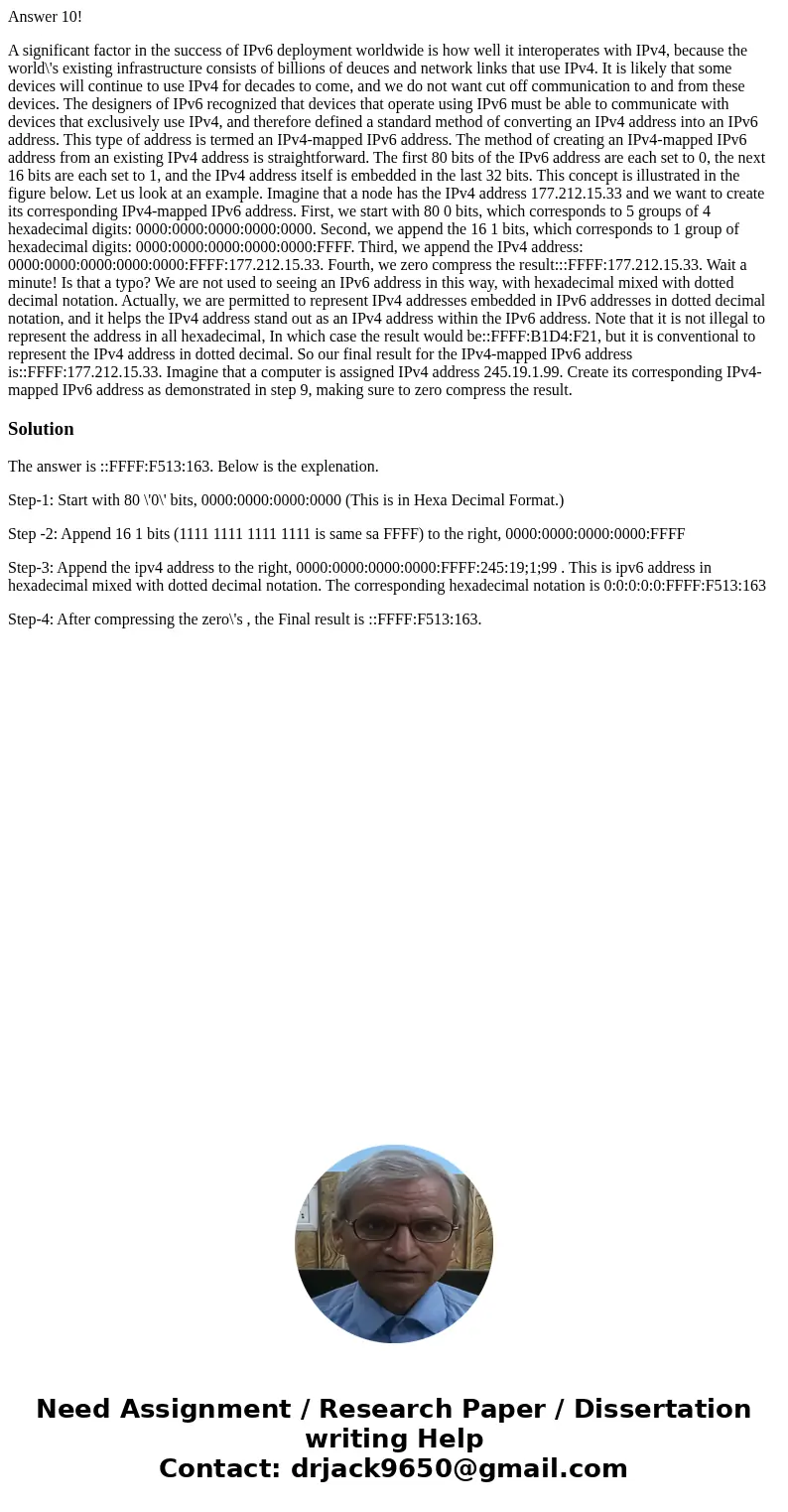Answer 10 A significant factor in the success of IPv6 deploy
Answer 10!
A significant factor in the success of IPv6 deployment worldwide is how well it interoperates with IPv4, because the world\'s existing infrastructure consists of billions of deuces and network links that use IPv4. It is likely that some devices will continue to use IPv4 for decades to come, and we do not want cut off communication to and from these devices. The designers of IPv6 recognized that devices that operate using IPv6 must be able to communicate with devices that exclusively use IPv4, and therefore defined a standard method of converting an IPv4 address into an IPv6 address. This type of address is termed an IPv4-mapped IPv6 address. The method of creating an IPv4-mapped IPv6 address from an existing IPv4 address is straightforward. The first 80 bits of the IPv6 address are each set to 0, the next 16 bits are each set to 1, and the IPv4 address itself is embedded in the last 32 bits. This concept is illustrated in the figure below. Let us look at an example. Imagine that a node has the IPv4 address 177.212.15.33 and we want to create its corresponding IPv4-mapped IPv6 address. First, we start with 80 0 bits, which corresponds to 5 groups of 4 hexadecimal digits: 0000:0000:0000:0000:0000. Second, we append the 16 1 bits, which corresponds to 1 group of hexadecimal digits: 0000:0000:0000:0000:0000:FFFF. Third, we append the IPv4 address: 0000:0000:0000:0000:0000:FFFF:177.212.15.33. Fourth, we zero compress the result:::FFFF:177.212.15.33. Wait a minute! Is that a typo? We are not used to seeing an IPv6 address in this way, with hexadecimal mixed with dotted decimal notation. Actually, we are permitted to represent IPv4 addresses embedded in IPv6 addresses in dotted decimal notation, and it helps the IPv4 address stand out as an IPv4 address within the IPv6 address. Note that it is not illegal to represent the address in all hexadecimal, In which case the result would be::FFFF:B1D4:F21, but it is conventional to represent the IPv4 address in dotted decimal. So our final result for the IPv4-mapped IPv6 address is::FFFF:177.212.15.33. Imagine that a computer is assigned IPv4 address 245.19.1.99. Create its corresponding IPv4-mapped IPv6 address as demonstrated in step 9, making sure to zero compress the result.Solution
The answer is ::FFFF:F513:163. Below is the explenation.
Step-1: Start with 80 \'0\' bits, 0000:0000:0000:0000 (This is in Hexa Decimal Format.)
Step -2: Append 16 1 bits (1111 1111 1111 1111 is same sa FFFF) to the right, 0000:0000:0000:0000:FFFF
Step-3: Append the ipv4 address to the right, 0000:0000:0000:0000:FFFF:245:19;1;99 . This is ipv6 address in hexadecimal mixed with dotted decimal notation. The corresponding hexadecimal notation is 0:0:0:0:0:FFFF:F513:163
Step-4: After compressing the zero\'s , the Final result is ::FFFF:F513:163.

 Homework Sourse
Homework Sourse